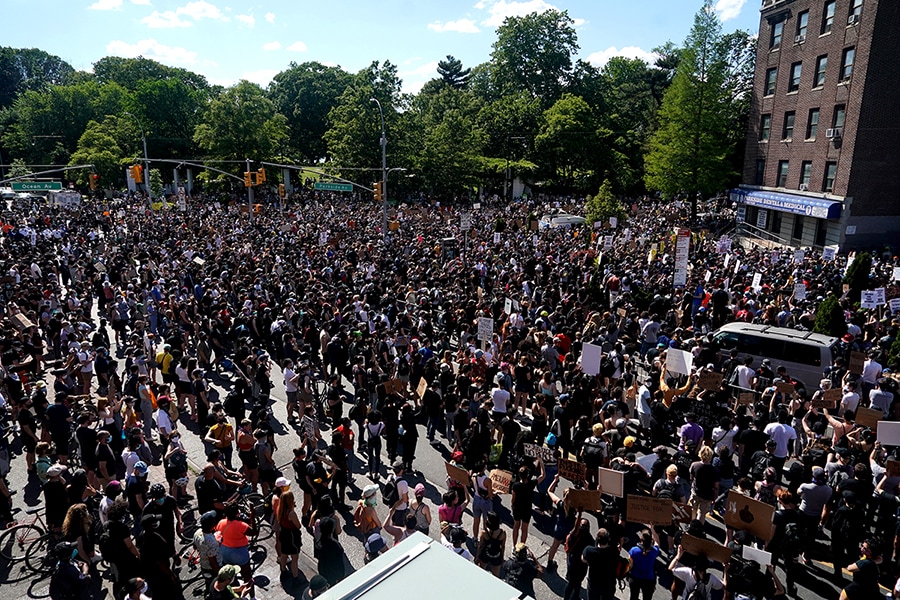
Will US protests spark a second coronavirus wave?
The protests in dozens of cities have been spurred most recently by the death last week of George Floyd at the hands of police in Minneapolis. But the unrest and outrage spilling out into the streets also reflects the dual, cumulative tensions arising from decades of killings by police and the sudden losses of family and friends from the virus
 Demonstrators at a rally in New York, May 30, 2020. Across the country, mayors, public health experts and other officials worry that even though many protesters are wearing masks, the risk of new coronavirus cases will increase as thousands gather. (Chang W. Lee/The New York Times)
Demonstrators at a rally in New York, May 30, 2020. Across the country, mayors, public health experts and other officials worry that even though many protesters are wearing masks, the risk of new coronavirus cases will increase as thousands gather. (Chang W. Lee/The New York Times)
Mass protests against police brutality that have brought thousands of people out of their homes and onto the streets in cities across America are raising the specter of new coronavirus outbreaks, prompting political leaders, physicians and public health experts to warn that the crowds could cause a surge in cases.
While many political leaders affirmed the right of protesters to express themselves, they urged the demonstrators to wear face masks and maintain social distancing, both to protect themselves and to prevent further community spread of the virus.
More than 100,000 Americans have died of COVID-19, the disease caused by the new coronavirus. People of color have been particularly hard hit, with rates of hospitalizations and deaths among black Americans far exceeding those of whites.
The protests in dozens of cities have been spurred most recently by the death last week of George Floyd at the hands of police in Minneapolis. But the unrest and outrage spilling out into the streets from one city to the next also reflects the dual, cumulative tensions arising from decades of killings by police and the sudden losses of family and friends from the virus.
The spontaneous outpouring of protests are occurring as many states have warily begun reopening after weeks of stay-at-home orders with millions of Americans unemployed. Restaurants, schools, beaches and parks are under scrutiny as the public tentatively practices new forms of social distancing.
©2019 New York Times News Service




